Offer Items

Which brands offer the biggest discounts at Outlet Stores ?
Outlet stores are known for offering discounted prices on a wide range of products from various brands. However, some brands tend to offer bigger discounts than others. Here are some of the brands that are known for offering significant discounts at outlet stores: 1. Nike: Offers discounts up to 50% off on shoes, apparel, and accessories, with clearance sales sometimes offering deeper discounts up to 70% off. 2. Coach: Offers discounts of up to 65% off on handbags, wallets, and accessories, with seasonal sales events like Black Friday and Cyber Monday providing additional savings. 3. Levi's: Offers discounts of up to 50% off on jeans, shirts, and other clothing items, with denim deals often available where you buy one item and get another for a significantly reduced price. 4. Calvin Klein: Offers discounts of up to 70% off on underwear, apparel, and accessories, with bundle deals often available where you buy multiple items for a discounted price. 5. Adidas: Offers discounts of up to 50% off on shoes, apparel, and accessories, with sports gear discounts also available on items like backpacks and duffel bags. End-of-season sales can provide even deeper discounts.

What kind of discounts should I offer during a clearance sale ?
Offering the right discounts during a clearance sale is crucial for attracting customers and clearing out inventory. Here are some strategies to consider: 1. Percentage-Based Discounts: Start with moderate discounts of around 20-30% on selected items and increase gradually as the sale progresses. 2. Buy One, Get One Free (BOGO) Offers: Select slow-moving items or bundle complementary items together. 3. Tiered Discounts: Encourage customers to spend more by offering tiered discounts based on the amount spent or quantity purchased. 4. Time-Limited Deals: Run short-term promotions like flash sales or countdown deals to create a sense of urgency. 5. Membership or Loyalty Discounts: Offer exclusive deals for members of your loyalty program or reward repeat customers with extra savings. 6. Price Threshold Discounts: Apply discounts only when a certain amount is spent or offer a maximum price guarantee. 7. Gift with Purchase (GWP): Reward loyal customers with free gifts or include promotional items with purchases over a certain amount. 8. Clearance Rack or Section: Designate a specific area or rack for clearance items and use prominent signage and labels to highlight the savings. 9. Online-Exclusive Deals: Offer exclusive online deals to encourage online shopping and reduce the burden on physical store inventory. 10. Combination Discounts: Mix and match different types of discounts, such as a percentage-based discount combined with a GWP offer or allow customers to combine multiple discounts for maximum savings. Remember, the goal of a clearance sale is to move inventory while still maintaining profit margins and brand reputation. Be strategic in your discounting approach and communicate clearly with customers about the deals you're offering.

What are some common pitfalls to avoid when buying second-hand items ?
When buying second-hand items, it's important to inspect them thoroughly for any signs of damage or wear and tear. You should also verify the authenticity of luxury items and research their value to ensure you're getting a fair price. Be wary of scams and consider the return policy before making a purchase. By following these tips, you can avoid common pitfalls and find great deals on high-quality products.

Do all brands offer sample sales ?
Not all brands offer sample sales, but many high-end and luxury brands do. Factors such as inventory management, product lifecycle, brand reputation, and marketing strategies influence whether a brand offers sample sales. Examples of brands that offer sample sales include Saks Off 5th, Nordstrom Rack, Neiman Marcus Last Call, and Bergdorf Goodman. Tips for shopping sample sales include staying informed, being prepared, setting a budget, trying everything on, and checking the quality.

How do I know if the discounted items at Outlet Stores are of good quality ?
Outlet stores offer discounted items, but it's important to assess their quality before buying. Check for manufacturer defects, research brand reputation, compare prices with non-discounted items, and ask about return policies.

Do Outlet Stores offer better discounts than regular stores ?
Outlet stores offer discounts on merchandise, but do they really offer better deals than regular stores? The answer depends on several factors, including the type of product being purchased and the specific outlet store being visited. However, in general, outlet stores tend to offer better discounts due to their business model of selling overstock, discontinued, or returned items. Shopping at outlet stores can have benefits such as discounted prices, a wide selection of products, and convenience. By understanding the factors that contribute to these discounts and shopping strategically, consumers can make informed decisions about where to purchase their desired products.

What are the essential items to pack for a backpacking trip ?
Essential Items to Pack for a Backpacking Trip: Shelter and Sleeping Gear, Clothing, Food and Water, Cooking and Eating Utensils, First Aid Kit and Safety Items, Navigation Tools, and Miscellaneous Items.
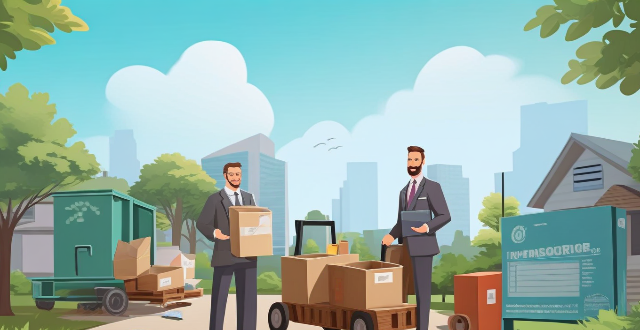
What are the benefits of recycling and reusing second-hand items ?
Recycling and reusing second-hand items offer significant benefits for the environment, economy, and society. By reducing landfill waste, conserving natural resources, and lowering emissions, these practices help to mitigate environmental challenges. Economically, they provide cost savings for individuals and create job opportunities. Socially, they promote sustainability and community engagement. Overall, recycling and reusing second-hand items are essential steps towards a more sustainable future.
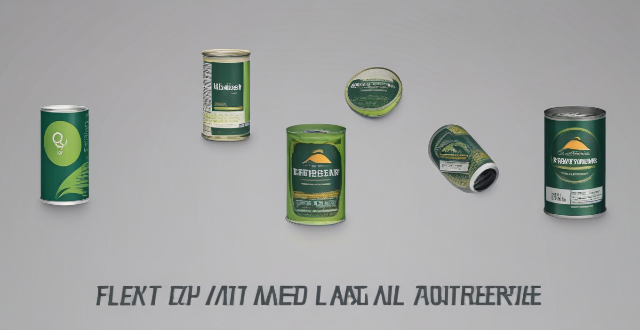
How can I save money while shopping for luxury items ?
Shopping for luxury items doesn't have to be expensive if you follow these tips. Set a budget, research prices, wait for sales, choose timeless designs, invest in quality, consider pre-owned items, negotiate prices, and avoid impulse buying to save money while enjoying the finer things in life.
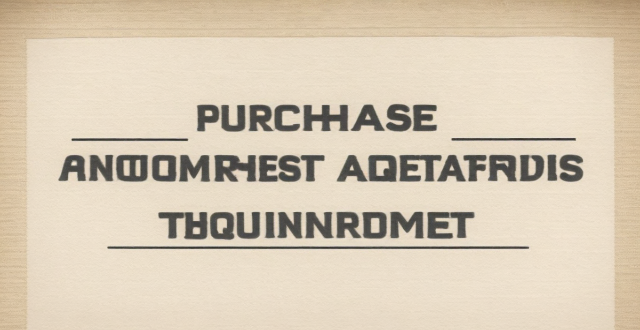
Is there a minimum purchase amount to qualify for the limited-time offer ?
Minimum purchase amount required for limited-time offer; benefits and tips for customers.

What are some tips for successfully haggling when buying second-hand items ?
Haggling is an art form, especially when it comes to buying second-hand items. It requires a combination of research, negotiation skills, and a bit of luck. Here are some tips to help you successfully haggle and get the best deal possible: 1. **Do Your Research**: Determine market value, understand the seller's motivation, and check for flaws or issues. 2. **Develop Negotiation Skills**: Start low but fair, be polite and respectful, use silence to your advantage, and be willing to walk away. 3. **Leverage Your Position**: Offer cash upfront, bundle items, and provide a counteroffer. 4. **Finalize the Deal**: Get it in writing, inspect before paying, and ask about returns. By following these tips, you can increase your chances of successfully haggling when buying second-hand items. Remember, the key is to do your homework, remain polite yet assertive, and be ready to walk away if necessary. Happy haggling!

How can I effectively describe my second-hand items to attract buyers ?
When selling second-hand items, it's important to provide a clear and compelling description that captures potential buyers' attention. Here are some tips on how to effectively describe your items: 1. Keep the title short and sweet, using keywords related to the item and mentioning the brand and model if applicable. 2. Provide a brief overview of the item's condition and features, and mention any standout qualities or unique aspects. 3. Clearly state the condition of the item, using descriptive words like "like new," "gently used," or "well-loved." If there are any flaws or damages, mention them explicitly. 4. Highlight the main features and benefits of the item, using bullet points for easy reading and emphasizing any additional accessories or bonus items included. 5. Include multiple high-quality photos showing different angles and details, making sure they are well-lit and focused. Consider adding a photo of the item in use or with a size reference. 6. Set a fair price by researching similar items to determine a competitive price point, and consider offering a negotiation range or stating "firm" if you're not willing to budge. 7. Mention where you are located and whether local pickup is available, and if you offer shipping, specify the cost and estimated delivery time. 8. Provide a way for interested buyers to contact you, such as an email address or phone number, and consider adding a link to your profile or website for more information about other items you may have listed. By following these guidelines, you can create an effective description that will help attract potential buyers and increase your chances of successfully selling your second-hand items.

What are the essential items to include in a disaster preparedness kit ?
A disaster preparedness kit should include essential items such as water, non-perishable food, a first aid kit, warm clothing and bedding, light sources, communication devices, tools, cash, important documents, and personal items. It is crucial to regularly check and replace expired items to ensure the kit is ready for any emergency situation.

What are the top websites for purchasing second-hand or refurbished items ?
Purchasing second-hand or refurbished items is a great way to save money while also being environmentally conscious. Here are some of the top websites for buying such items: 1. eBay is one of the largest online marketplaces where you can find both new and used items. It offers a wide range of products, including electronics, clothing, furniture, and more. 2. Craigslist is a classified advertisements website where people can post listings for various items, including second-hand goods. 3. Facebook Marketplace is a platform within Facebook where users can buy and sell items locally. 4. OfferUp is a mobile app that allows users to buy and sell items locally. 5. Swappa is an online marketplace specifically designed for buying and selling gently used technology like smartphones, laptops, and tablets. 6. Gazelle is a website that specializes in buying and selling refurbished electronics, including smartphones, tablets, and laptops.

Are all products included in a buy one get one free offer or are there exclusions ?
The answer to this question depends on the specific offer and the terms and conditions set by the retailer or manufacturer. In general, most "buy one get one free" offers apply to a select range of products, and there may be certain exclusions. Here are some common scenarios: - Exclusions based on product category, such as certain types of products not being eligible for the offer. - Exclusions based on brand or price, with some brands or items above a certain price threshold being excluded from the promotion. - Exclusions based on quantity limits, with caps on the number of items you can get for free or individual item limits. - Other potential exclusions, such as promotional periods or redemption requirements. It's essential to read the fine print and understand any potential exclusions before making a purchase to ensure that you fully benefit from the promotion without encountering unexpected limitations or disappointments.
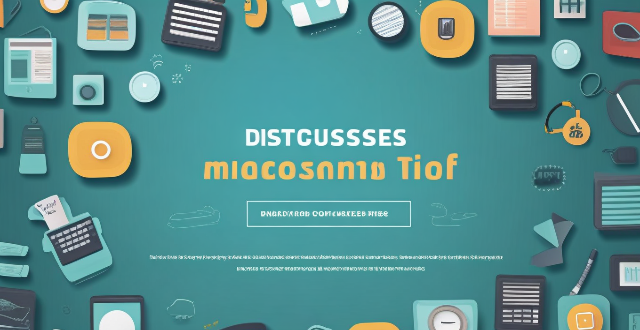
What are some shopping apps that offer exclusive promotions and sales events ?
The text discusses various shopping apps that offer exclusive promotions and sales events. Amazon, Walmart, Target, Best Buy, eBay, and Groupon are among the top shopping apps that provide deals to consumers. These apps offer daily deals, loyalty programs, holiday promotions, and more to help shoppers save money on their purchases. The article concludes by urging readers to check out these apps before making any purchases.

Do buy one get one free deals apply to sale items as well ?
Buy one get one free (BOGO) deals are a popular marketing strategy used by retailers to boost sales. These offers can be tempting, but it's important to understand the terms and conditions associated with them. In this article, we will explore whether BOGO deals apply to sale items as well. Before diving into the specifics of sale items, let's first clarify what BOGO deals entail. Typically, a BOGO deal allows you to purchase one item at full price and receive another item of equal or lesser value for free. There may be restrictions on which products are eligible, so it's essential to read the fine print before making a purchase. Now, let's address the main question: do BOGO deals apply to sale items as well? The answer is that it depends on the retailer's policies. Some retailers may include sale items in their BOGO promotions, while others may not. Here are some factors to consider: - Retailer Policy: Each retailer has its own policy regarding BOGO deals and sale items. It's crucial to check the terms and conditions of the offer to see if sale items are included. - Promotion Details: Pay attention to the details of the promotion. Some BOGO deals may specifically state that they are only applicable to regular-priced items, excluding sale items. - Timing: If a BOGO deal overlaps with a sale event, it's possible that both discounts could be applied. However, this is not guaranteed and should be confirmed with the retailer. If you're looking to take advantage of BOGO deals, here are some tips to help you maximize your savings: - Plan Ahead: Keep an eye out for upcoming sales events and BOGO promotions. This way, you can plan your purchases accordingly and potentially stack multiple discounts. - Read Reviews: Before making a purchase, read reviews from other customers who have taken advantage of BOGO deals. This can give you insight into which products are worth buying and any potential pitfalls to avoid. - Compare Prices: Even with a BOGO deal, it's still important to compare prices across different retailers. Sometimes, a sale item at one store may be cheaper than a BOGO deal at another store. In conclusion, whether BOGO deals apply to sale items depends on the retailer's policies and the specific details of the promotion. To make the most of these offers, it's essential to read the fine print, plan ahead, and compare prices across different retailers. By following these tips, you can maximize your savings and enjoy the benefits of BOGO deals without breaking the bank.
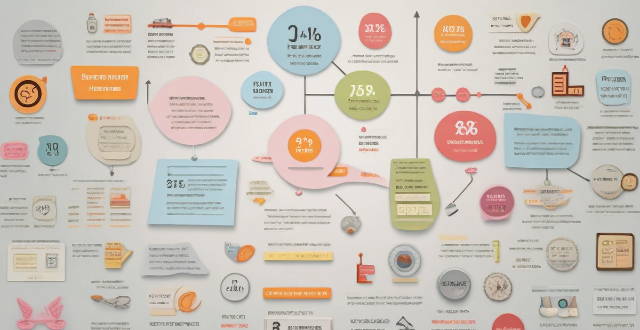
What is the return policy for items purchased during a limited-time promotion ?
When you purchase items during a limited-time promotion, it is important to understand the return policy associated with those purchases. The return policy for items purchased during a limited-time promotion may vary depending on the retailer or brand. Most retailers have a specified time limit for returns, which is usually stated in their return policy. The item must be returned in its original condition, including any packaging and accessories that were included with the purchase. Refunds are typically issued using the same method of payment as the original purchase. There are some exceptions to the general return policy for items purchased during a limited-time promotion, such as final sale items, customized items, and shipping and handling fees. To ensure a smooth return process, keep receipts and packaging, check the return policy before purchasing, and contact customer service if unsure.

What are the best practices for recycling household items ?
Recycling household items is crucial for reducing waste and conserving resources. Best practices include knowing local guidelines, cleaning items, flattening cardboard, separating recyclables, using bins properly, donating usable items, composting organic waste, and buying products with recyclable packaging. By following these steps, individuals can contribute to a more sustainable future and reduce their environmental impact.

Can I combine the limited-time offer with other store promotions ?
## Can You Combine a Limited-Time Offer with Other Store Promotions? The answer to this question depends on the store and its policies. Some stores allow customers to combine limited-time offers with other promotions, while others do not. It is important to read the terms and conditions of each promotion carefully to determine whether they can be combined. Key points to consider include reading the fine print, contacting customer service for clarification, checking if stacking discounts are allowed, being aware of the timing of promotions, and knowing any exclusions that may apply.

What are some creative ways to repurpose second-hand items ?
Repurposing second-hand items is a creative and sustainable practice that can save money and reduce waste. Here are some ideas for giving new life to pre-loved items: furniture makeover, clothing transformations, kitchenware reinvention, accessory revamps, artwork and décor, and kids' toys reimagined. By getting creative with second-hand items, we can contribute to promoting sustainability while saving money.

How can I safely transport large or fragile second-hand items ?
The article provides a detailed guide on how to safely transport large or fragile second-hand items. It starts by listing the necessary packing materials and then moves on to assessing the item for pre-existing damage. The article emphasizes the importance of disassembling larger items, proper packing techniques for both fragile and large items, and loading the vehicle carefully. It also includes tips for safe driving during transit and careful unloading. The article concludes with a recommendation to consult professional movers when unsure about handling such items.

What are some fast techniques for sorting and storing items ?
Sorting and storing items can be a time-consuming task, but there are several fast techniques that can help you organize your belongings efficiently. Here are some tips to get started: 1. Declutter First: Remove unnecessary items from your space. Donate or sell items that are still in good condition. Dispose of items that are broken or unusable. 2. Categorize Your Items: Categorize your items into groups based on their purpose, frequency of use, or any other criteria that make sense for your situation. This will help you determine where each item should be stored. 3. Use Containers and Labels: Invest in containers of various sizes to store your sorted items. Clear containers are great because they allow you to see what's inside without opening them. Label each container with its category or contents to make it easy to find what you need quickly. 4. Utilize Vertical Space: Shelves, hanging organizers, and wall-mounted racks can help maximize your storage capacity and keep things off the floor. 5. Maintain Organization: After sorting and storing your items, it's crucial to maintain their organization regularly. Set aside time each week or month to go through your belongings and ensure everything is in its proper place.
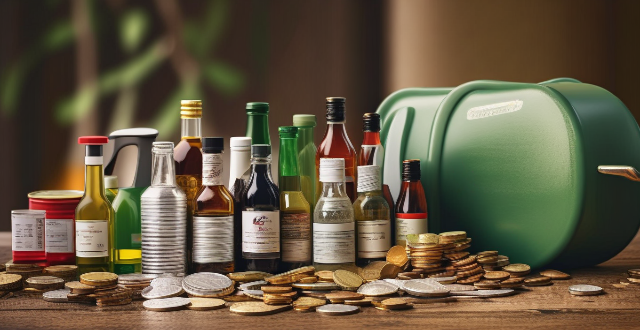
Can I use other discounts along with a buy one get one free offer ?
The article discusses whether customers can combine other discounts with a buy one get one free (BOGO) offer. BOGO offers are common in various industries and provide customers with an additional item for free when they purchase one at full price. However, most retailers do not allow combining discounts with BOGO deals. There are exceptions to this rule, such as during holiday seasons or if certain products are excluded from the general rule. The article provides tips on how to navigate these policies and maximize savings by being strategic in their purchases.

What is the ideal way to pack fragile items for a journey ?
Packing fragile items for a journey can be a daunting task, but with the right approach, you can ensure that your precious belongings arrive at their destination safely. Here are some tips on how to pack fragile items ideally: 1. Use proper packing materials such as bubble wrap, packing paper, foam peanuts, and anti-static polyethylene bags. 2. Wrap each item individually to reduce the risk of damage during transit. 3. Use boxes of appropriate size to accommodate the item without too much extra space or pressure. 4. Label boxes appropriately with clear, legible writing to indicate that the box contains fragile items and which direction is up.

Can you suggest any essential items I should always pack for a vacation ?
When planning a vacation, it's important to pack the essential items that will ensure your comfort and safety throughout the trip. These include travel documents, clothing, toiletries, electronics and accessories, and miscellaneous items such as a travel pillow, reusable water bottle, snacks, reading material, cash and credit cards, and a travel journal. By packing these essentials in your carry-on luggage, you can ensure a comfortable and enjoyable vacation experience.

What are the essential items to include in a grocery shopping list ?
When creating a grocery shopping list, it's important to consider your dietary needs, preferences, and any specific recipes you plan to make during the week. Here are some essential items to include in your list: - Fresh produce like fruits, vegetables, herbs & spices - Meat & dairy products such as chicken, beef, milk, cheese, yogurt, eggs, etc. - Grains & legumes including rice, pasta, quinoa, bread, beans, lentils, chickpeas, etc. - Pantry staples like oils & vinegars, baking supplies, snacks - Beverages like water, coffee & tea, juices & sodas - Personal care & household items like toiletries and cleaning supplies Customize your list based on your personal preferences and dietary restrictions. Happy shopping!

What are the essential items to include in a home first aid kit ?
A well-stocked first aid kit is an essential component of any home. It should contain items that can help you deal with minor injuries and illnesses that may occur in your household. Here are some of the essential items that you should include in your home first aid kit: 1. Adhesive Bandages 2. Sterile Gauze Pads and Rolls 3. Medical Tape 4. Antiseptic Wipes or Solution 5. Tweezers 6. Scissors 7. Thermometer 8. Pain Relievers 9. Antihistamines 10. Cold and Hot Packs 11. Latex Gloves 12. Safety Pins

Are there any specific items that cannot be included in a tax-free shopping claim ?
Certain items may not qualify for tax exemption in tax-free shopping, including alcohol and tobacco products, perishable food items, medications and prescription drugs, firearms and weapons, and hazardous materials. The specific items that cannot be included in a tax-free shopping claim may vary depending on the country's customs regulations and policies.

How do I properly clean and sanitize second-hand items before using them ?
The provided text offers a comprehensive guide on properly cleaning and sanitizing second-hand items to ensure their safety for use. The steps are divided into general cleaning procedures, specific instructions for different types of items like clothing, footwear, furniture, kitchenware, toys, and electronics, and additional tips on sanitization. The process involves inspection, initial cleaning, disassembly (if needed), soaking for smaller items, and using appropriate cleaning methods for various items. Sanitizing tips emphasize the wise use of disinfectants, ensuring ventilation, protecting oneself from harsh chemicals, and drying items thoroughly to prevent mold growth. This detailed guide ensures that second-hand items are not only reused but also recycled safely.